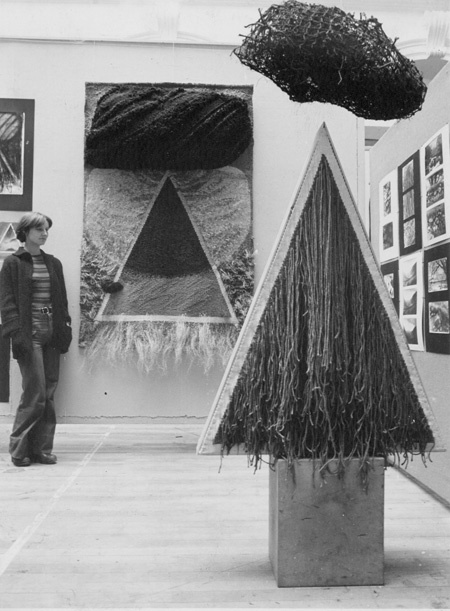About Tapestry 5

Joan at a degree exhibition 1976
About Tapestry Continued/5
As in other areas of the visual arts the advent of printing and mass literacy revolutionised tapestry design. In medieval times tapestries had a very strongly narrative function because very few people could read. The subjects were often moral tales from the Bible, from folk tales or scenes from courtly life. The tapestries could be read on several levels. The first level of meaning would be the story and details of things like what kind of clothes the aristocracy were wearing - like a cross between a strip cartoon and Vogue magazine. Secondly the symbolism could be easily read by a medieval viewer - different trees, flowers and gestures would have had specific meanings, which are hard for us to read now without a deep understanding of political, intellectual and domestic life at that time. In the 17th, 18th and 19th centuries subjects for tapestries tended to be more romantic - pastoral, mythological or historical scenes.
In the 20th century it was no longer necessary to reproduce people, things or events in an immediately recognisable form, since the mass media can do this much more efficiently and can reach a much larger audience. This has liberated tapestry weavers in the same way as it has other visual artists, to explore other more abstract areas of expression through their chosen medium. In previous centuries tapestries were usually woven in Studios by groups of weavers trained in the technical and interpretive aspects of the medium, from designs made by specialist designers or painters. The emergence in the second half of the 20th century of a large number of artists who both design and weave their own work has been the most important development in the history of tapestry for many centuries. This revolutionary new approach has brought about a worldwide re-emergence of tapestry as an art form. British artist weavers, along with their Scandinavian and East European colleagues, have been in the vanguard of this movement.
